If you distribute a story written in a place at that place, the reader will naturally read the story at that place. "Stories of 15 Places in Nakanoshima" by theatre writer, Kosetsuya, and Toshinori Okada, the president of Chelfitche, is arranged in 15 facilities and buildings that participate in Creative Island Nakanoshima, is a text written on the premise of such a special reading experience.
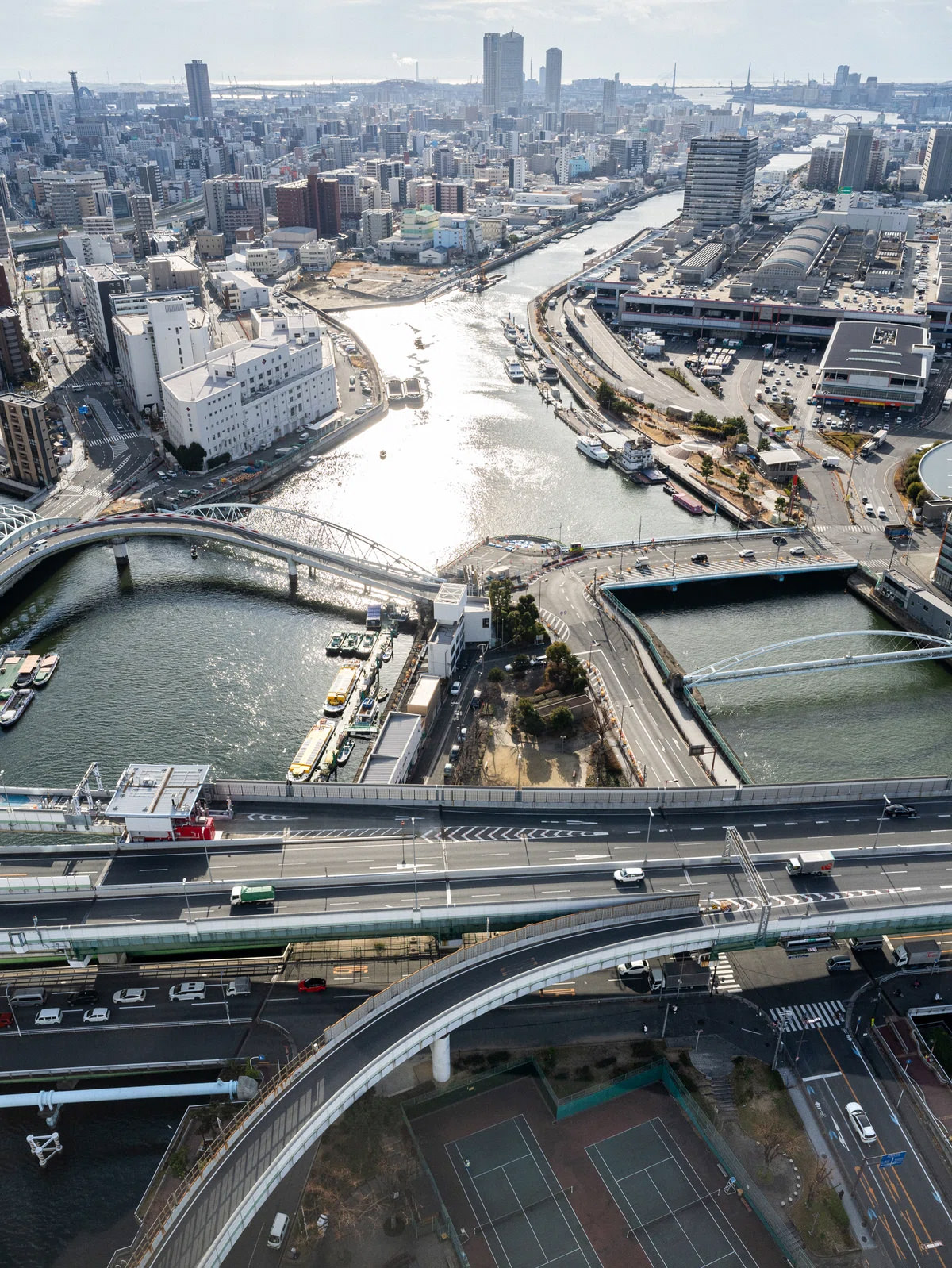
Toshinori Okada visited Nakanoshima intermittently in 2019, 2021, and 2023, and began writing in 2024. For two weeks from July 11th to 25th, I stayed at graf porch, a residence space in graf, Nakanoshima, where I focused on writing the manuscript in so-called “canned”. The first one I wrote was Osaka City Central Public Hall. The text, dubbed “OMM build,” reflected a 2023 study of Osaka City Central Public Hall from a rooftop garden in OMM build and a revisit to the life of Einosuke Iwamoto (a person who invested his private fortune in Osaka City Central Public Hall) in the gallery space under the Osaka City Central Public Hall. Since it is a manuscript request based on research, it is natural that it is natural, but when the story was written in this way, I was reminded of a number of times.
Fiction at the end of the place
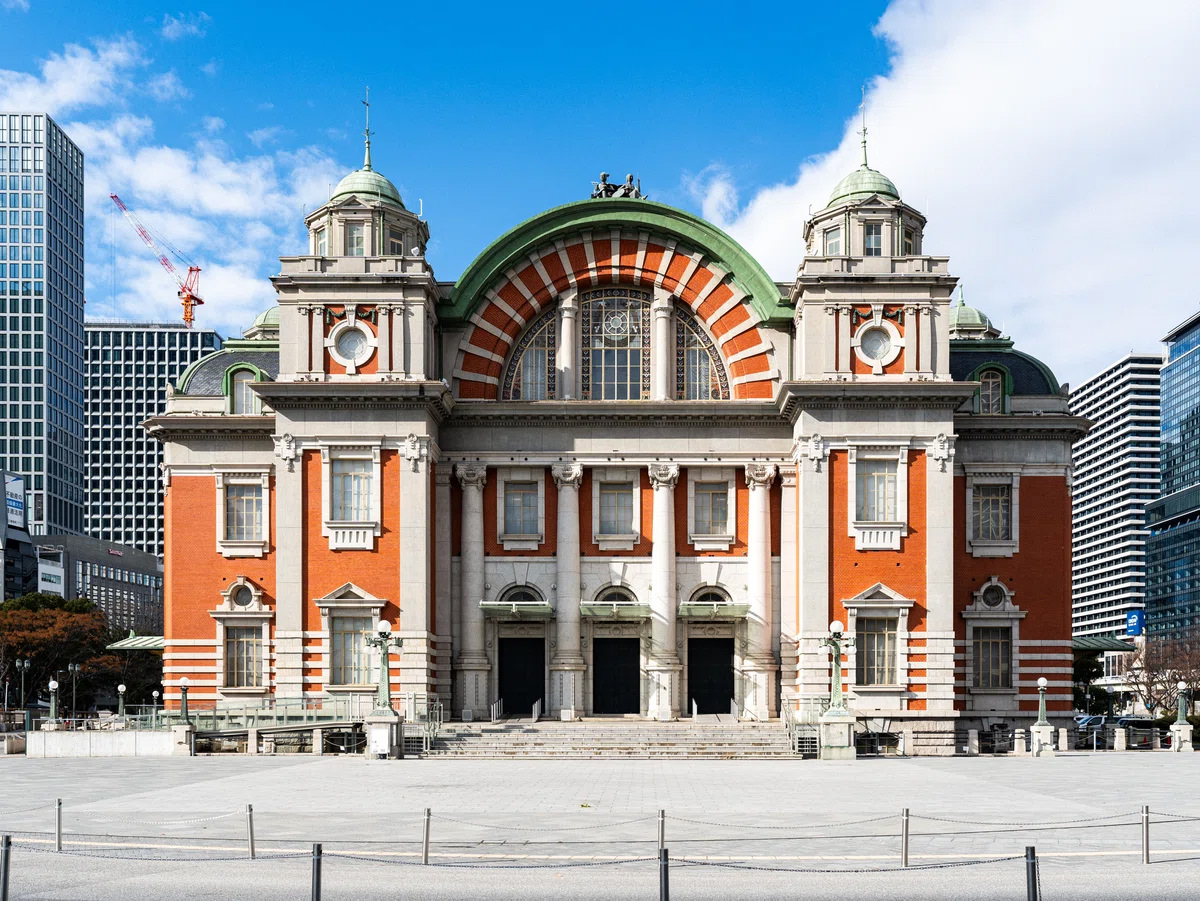
The story "OMM build" written in accordance with Osaka City Central Public Hall is arranged at the meeting point located in the basement of Osaka City Central Public Hall, and the story tells us that starting from this place, you will go up the stairs next to it. The stairs are above ground floor, standing beside the lobby of the large assembly room, the main hall of the building, and now it is the day of the weekend, and the hall is open to the public. The door is open, and there is a text message in front of it saying, "You can freely view the large assembly room from 10:00 to 14:00 today."
One day, it is true that Mr. Okada looked around the place on the spot, and the depiction of the scene in line with the scene is something that spreads throughout "Stories of 15 Places in Nakanoshima". In fact, while writing the text during the “canning” in July, when the details of the building and the space came out, there was a figure of Mr. Okada who visited each point by bicycle every time he visited each point.
One of the highlights of reading is the development of the seamless transition to a world of fiction that is impossible in reality, based on such depictions carefully close to the actual place. For example, in the story "Vacant Land" written by Nakanoshima Museum of Art, Osaka, it is encouraged in the text to sit on one of the benches in the common space at the distribution point and pay attention to the wall in front of it.
"A wall with armored design featuring silver wing board. What you are staring at is the space between the wing board and the wing board, which is characteristically seen in the real Nakanoshima Museum of Art, Osaka, when you notice, the space of the gap is moving away from the back, and the speed is rising rapidly. It is a development that feels like a sci-fi-like reality collapse, but since it describes the reality in front of the eye reading this text = the change of the wall, it is different from mere imaginary fiction. It can be said that the story was born that the reality and fiction were connected by a single thin skin because they were depicted close to each place.
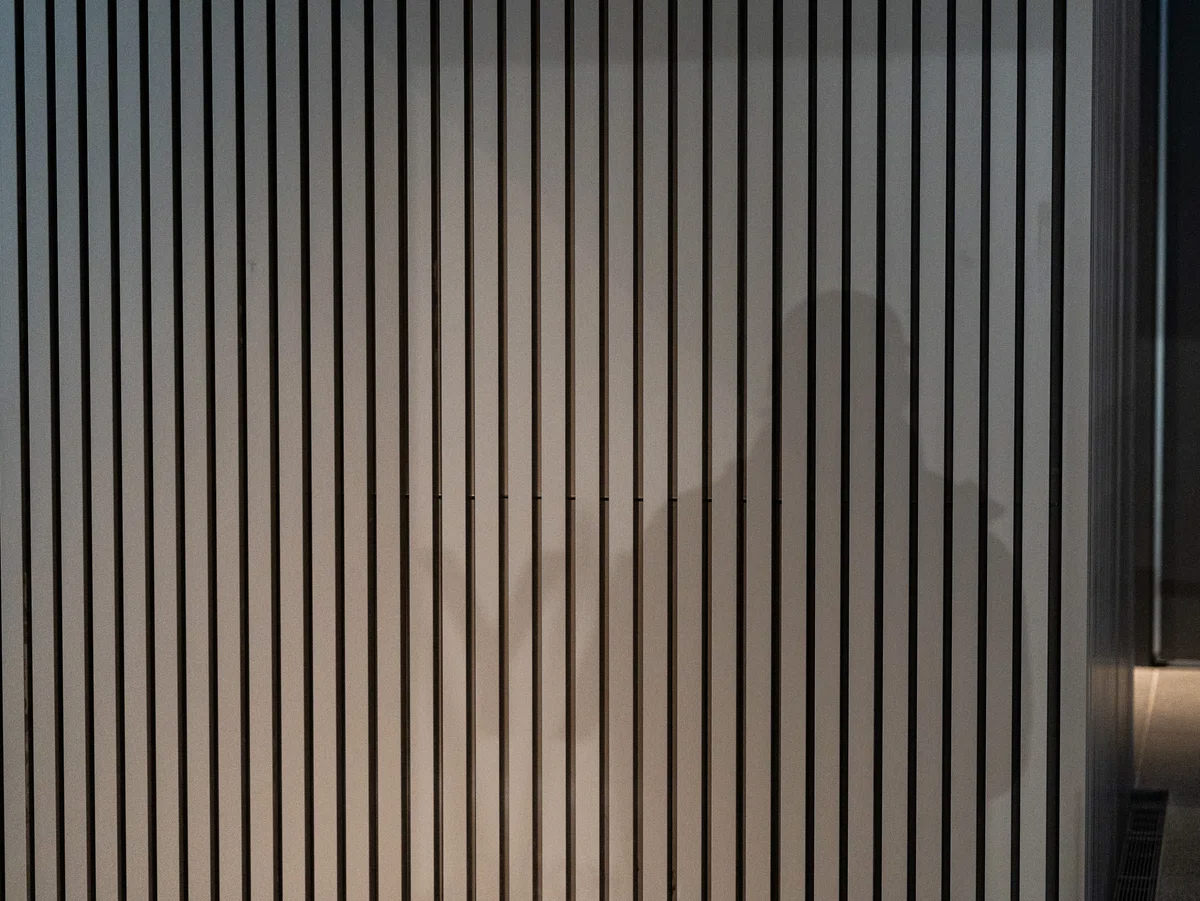
By the way, the text about Nakanoshima Museum of Art, Osaka was written after Mr. Okada left Osaka, so I received the following email to the staff to reconfirm the scene. I will also record here that the staff members have confirmed the facts without knowing how this relates to the story.
I would like you to find out about the Nakanoshima Museum. The inside of the outer wall (the state seen from the inside of the building) has a specification like repeating vertical ridges and grooves (do you understand what you are saying?) I want to know the length of the width of that ridge and groove, and the depth of the groove. Also, I would be grateful if you could take a picture of the distance between the wall and the bench. "
A story that calls to you
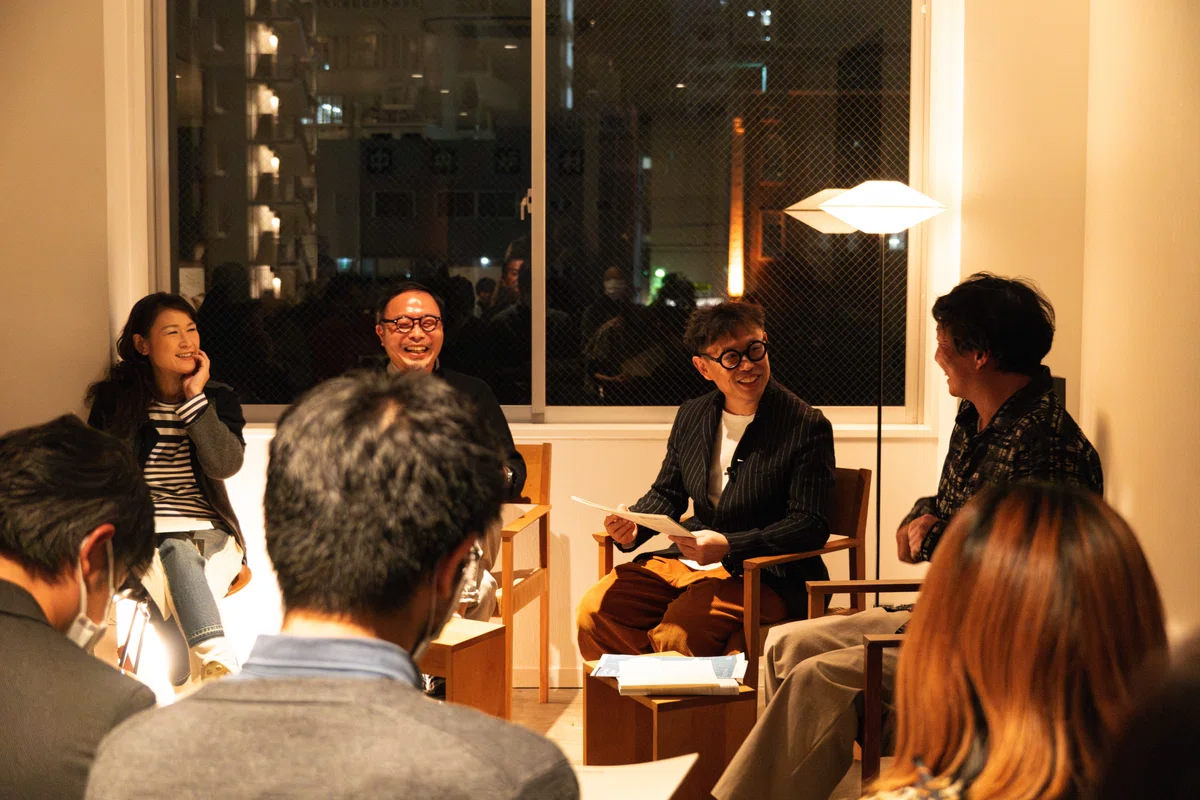
Photo: Ai Nakagawa
It means that the text written to a certain place will be read there. In response to this unique reading experience, most of Okada's "Stories of 15 Places in Nakanoshima" adopted the second person, "You."
For example, here is the opening text of "Nishikibashi" written according to Nakanoshima Festival Tower.
From the moment I entered this building through the automatic door of the entrance, I knew that you could not have to care about me, who had the greatest presence in this space.
"Nishikibashi"
"Because it's a project where what you write will be read in that place, there's such a thing there, pointing to focus on some of the scenery you see, that is, you can use the directing function that the text is good at, and some people are watching you reading this text, I thought it was interesting to be able to write things like that. Because I usually read something, and I don't usually think about how I'm seeing it now," says Okada. Yes, in Stories of 15 Places in Nakanoshima, you are often called out by text. This is also a rare reading experience.
In addition, during the Q&A session of the talk event held after "Stories of 15 Places in Nakanoshima" was completed, it was pointed out that the text calling "you" was similar to a horoscope. When you say that, it seems like a prophesied text written in advance of the reader's movements on the spot.
Or if you know Okada's success in the theater world, some may feel it as a play, but Okada himself says he was never conscious of the play.
"I don't think I'm writing a play, so I don't think it's related to theater, but I don't know how unconsciously theatrical things in me appear.…。 However, the director of the theater directs actors, but I consciously do the text of the play that if the actor says this word on the stage, the audience will be able to imagine such things. But rather than doing it because it's a theater, I think there are places where I write based on the fact that I can direct in words no matter what text I write."
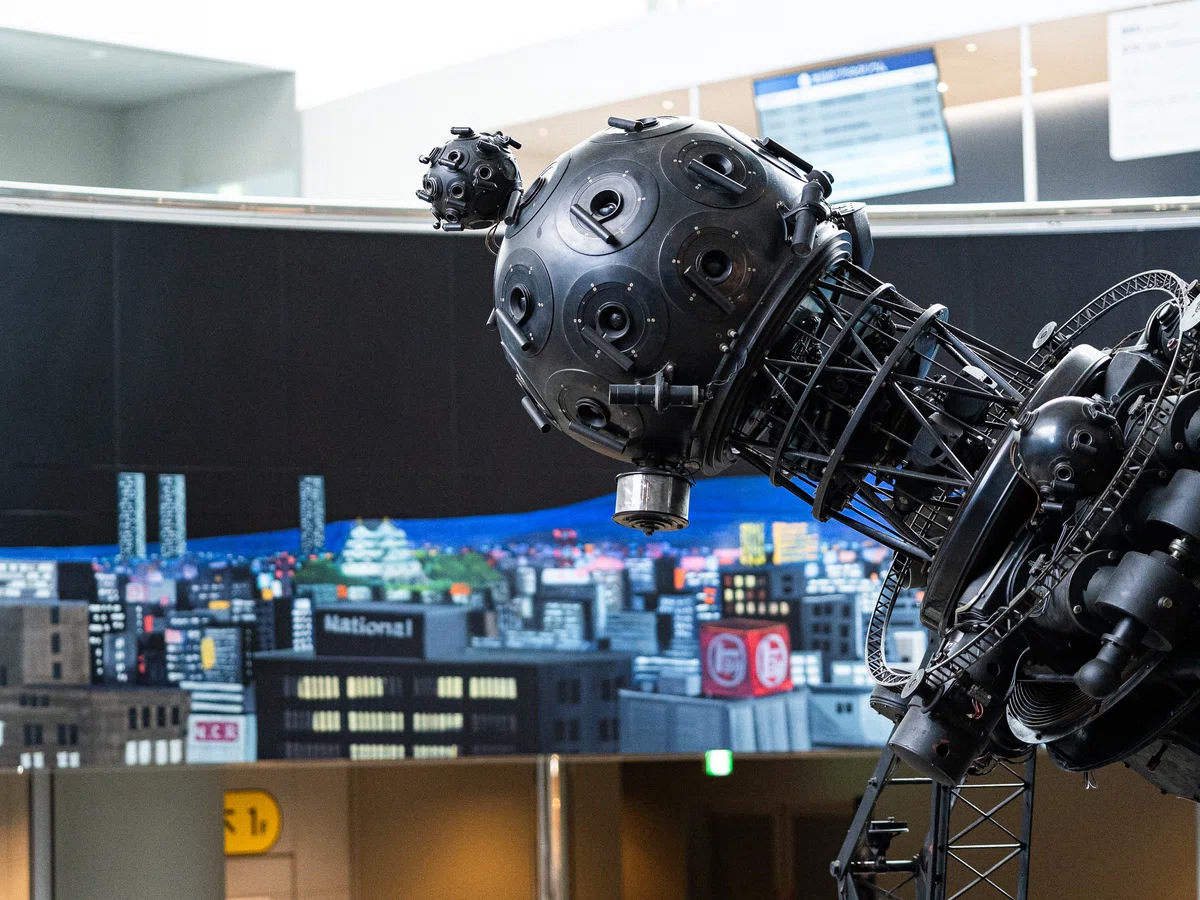
If you are also here in the lobby of Osaka Science Museum, imagine it. Which of the people here now is I?
"Which one is me?"
While taking into account the form of Noh.
During his research, Mr. Okada repeated and talked about ghosts and ghosts. In other words, it was a prediction that the form of Noh could be used in the writing of Stories of 15 Places in Nakanoshima, but in the actual story, you can see a number of texts that were written under the structure of Noh.
Speaking of the connection between Okada and Noh, in 2016, he worked on Japanese translations of Noh and kyogen in one volume of "Natsuki Ikezawa = Individual Edited Japanese Literature Complete Works", and since then he has often performed stage performances using the Noh format. The form of Noh here is called Yumegen Noh, in which a traveler visits a land, meets something that is not of this world, and talks about old events and causes.
"The ghost who tells the story of the land in Noh is called shite, and the traveler is called waki, but in Stories of 15 Places in Nakanoshima, the reader who holds the text and reads the story on the spot is exactly Waki's position, where the vision begins, that is, fiction starts. I don't think anyone who reads this text thinks it's like Noh, but I actually use the framework of Noh quite a bit."
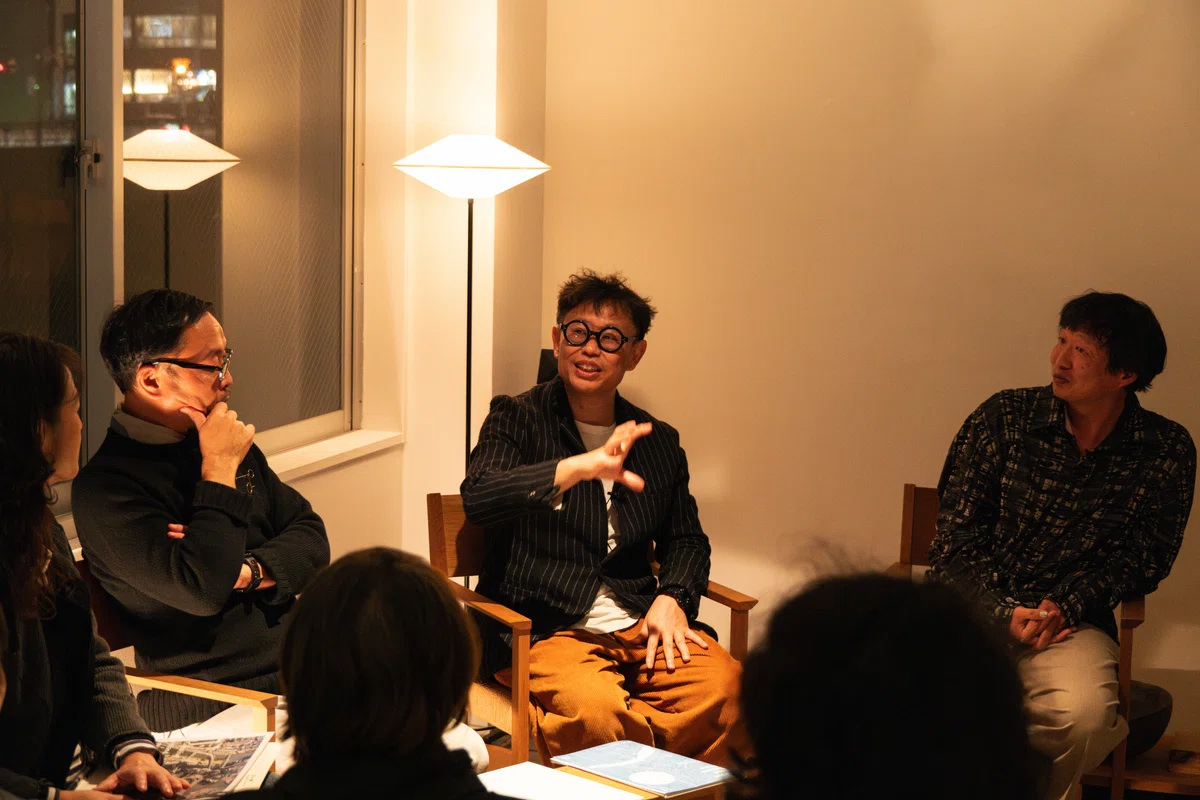
It is like a shite that tells the story of the land. Such narrators often appear in Stories of 15 Places in Nakanoshima, and one of the origins of this idea is the story of the Great Flood that occurred in Osaka in 1885 when I went to research. The waters of Yodo river flooded all over Osaka City, and many bridges were washed away in Nakanoshima, including Tenjinbashi and Sendannoki Bridge.
“Most of the Nakanoshima was flooded, but of course there is no trace of it in Nakanoshima today. But when I knew that such an event had happened, I got an image. That said, unlike the fact that I could write the experience of the disaster in a realistic form, I thought it would be interesting if I could superimpose such facts and fiction. For example, Yashima in Kagawa is also the site of the battlefield of Genpei war, and this is also Noh, but I don't know that there was such an event even if I went to Yashima. However, if you install something that happened, you can feel it overlaid in the real place, and I'm very interested in that."
The story about the Great Flood of 1885 can be read in "Plaza" written by Grand Cube Osaka. Also, as a shite-like entity that talks about the origin of the land, in Stories of 15 Places in Nakanoshima, historical figures such as Einosuke Iwamoto and Tekijyuku students appear, and sometimes the building itself begins to talk about something. Visit the 15 meeting points and taste the 15 stories while taking care of the various narratives that differ from story to story.
"Stories of 15 Places in Nakanoshima" will be developed in Nakanoshima in the future based on the text written by Toshinori Okada, so please look forward to future developments.
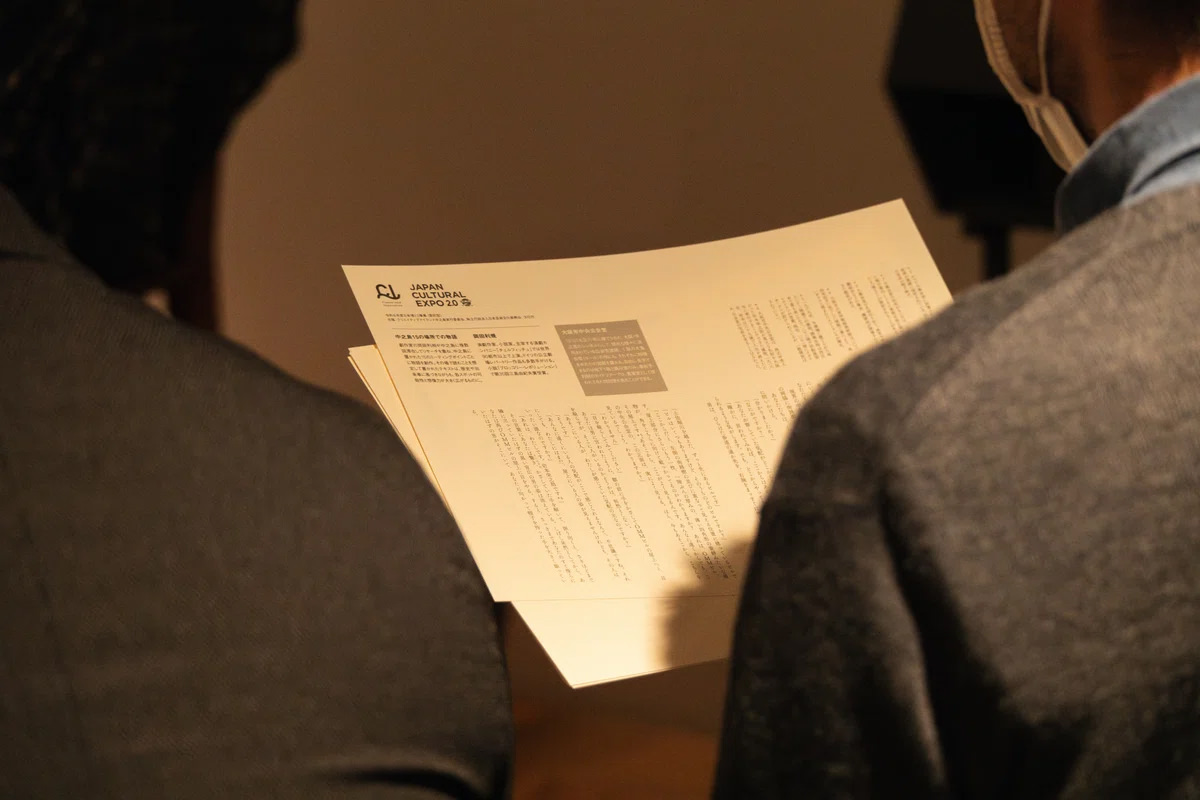
※Okada's words in this text are based on what was spoken at the interview in July 2012 and at the talk event on November 20.
Sentence: Atsushi Takeuchi
※The full text of "Stories of 15 Places in Nakanoshima" was published in the March 2025 issue of literary magazine "Shincho". The photo taken by Takuya Matsumi in this article is a photo taken for the publication of "Shincho".
Toshiki Okada "Stories of 15 Places in Nakanoshima" ※Title of Works| Target facilities
"Thirty-first floor" Nakanoshima center building
"Plaza." Osaka International Convention Center Corp. (Grand Cube Osaka)
"Leach Bar" Rihga Royal Hotel
“From Tekijuku building (Tekijyuku)” The University of Osaka Nakanoshima Center
"Vacant Lot" Nakanoshima Museum of Art, Osaka
"B4F" The National Museum of Art, Osaka
"Which is I?" Osaka Science Museum
"Here" graf
"Nishikibashi" Nakanoshima Festival Tower
"Alternative Way" Nakanoshima Festival Tower West
"Spatialization of the experience of reading books" Osaka Prefectural Nakanoshima Library
"OMM Building" Osaka City Central Public Hall
"FIGURINE OF A LADY(Kasaifujyoyou)" The Museum of Oriental Ceramics, OSAKA
"Mysterious Fune" Children's Book Forest Nakanoshima
“Art Area B1 Front Underground Pass” Art Area B1
[Archiving]
Nakanoshima Promotion / Artist Creation “Stories of 15 Places in Nakanoshima” Talk & Reading
Date and time: Wednesday, November 20, 2024 18:30 to 19:30
Venue: graf porch
Speaker: Toshiki Okada (directed by theater writer, novelist, the theater company chelfitsch), Shigeki Hattori (graf Representative, Creative Director), Atsushi Takeuchi (Editor)
Moderator: Chieko Kinoshita (Associate Professor, Kaitokudo, 21st Century The University of Osaka)
Commissioned by: Fiscal 2024 Japan Cultural Expo 2.0 Project (Commissioned)
〈Organizers〉 Creative Island Nakanoshima Executive Committee, Japan Arts Council, Agency for Cultural Affairs, Government of Japan
Co-sponsored by: Nakanoshima Pavilion Festival 2025